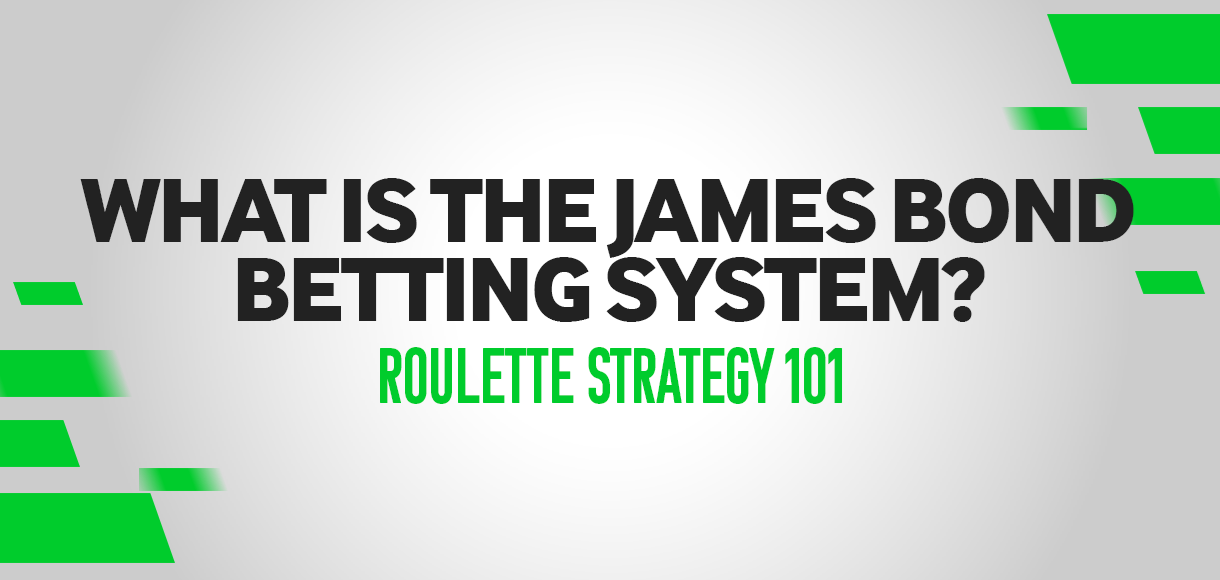Roulette strategy 101: What is the James Bond betting system?

Can the James Bond roulette betting system improve a player's bankroll? Follow in the footsteps of 007 and see if it can improve your house edge.
There are plenty of betting systems around that can be used when you play online roulette.
Some require an increase in wagers after a win, while others make you decrease your stakes.
Named after Ian Fleming's legendary 007, the James Bond betting system uses a flat stake on every spin.
Bond may be one of the luckiest gamblers in the world, but can the system named in his honour work out for players? Let's take a look at the pros and cons of this unique staking plan.
How the James Bond betting system works
007 was renowned as a keen - and lucky - gambler in his many outings in paper and on screen. Baccarat was usually Bond's choice of game, although he made occasional forays into roulette and poker.
The James Bond system is used in roulette. It's a simple plan that requires 20 units of stake. Bets are placed on a selection of numbers and sections.
The idea is that by covering most possible outcomes, the player can ensure a better long-term profit. In fact, all numbers are covered except the numbers 1-12.
European Roulette is used for this system. The table features 37 numbered pockets including a single zero. Here is how the bets in the James Bond system are sized:
14 units:
Outside bet 19-36
Pays 1/1
5 units:
Inside bet 13-14-15-16-17-18 (the 6-line bet)
Pays 5/1
1 unit:
Inside bet 0 (single zero)
Pays 35/1
The James Bond system in practice
Let's look at how the system works in practice. The greatest stakes are put on the outside bet. The bet pays less but is more likely to come in. At the other end of the scale, just one unit is wagered on the single number, which carries odds of 35/1.
If 19 came up on your first spin - at £1 a unit - you would win £14. The 6-line bet and zero bet would both lose, so you would be left with £8 profit.
If your spin resulted in a number 14, you would win £25. Subtract £14 and £1 for your other two losing bets and you are left with £10 profit.
If your spin came up 0, you would win £35. Subtracting £14 and £5 would leave you with £16 profit.
If the spin comes 1-12, you must double your stake on the next spin using the Martingale system.

From the above table, you can see that eight spins and five wins would result in £100 won and £80 lost. Despite three losing spins, that's £20 profit - equal to the original stake.
Advantages and disadvantages of the James Bond betting system
The advantages of the James Bond system are clear: the player covers a single number and a lucrative 6-line, while hedging their bets with an outside bet at 1/1.
The problem comes when factoring in the losing spins. The James Bond plan doesn't cover the numbers 1-12 so there is a chance you will end up on the losing end. If you are employing the Martingale on losing spins it could lead to some big downswings.
Like all casino games, European Roulette carries a house edge. In this game it's around 2.7 per cent (in American Roulette it's nearly double at 5.26 per cent). That means you are statistically likely to lose in the long term when playing roulette.
And when you dig deeper into the James Bond betting system, you can see that it's statistically a losing strategy.
If you spun the roulette wheel 37 times and every number in the system (e.g. 0, 13, 14, 15, 16, etc) came up once, you would end up £20 in the red. Being on the wrong end of a £20 downswing for every 37 numbers doesn't sound like a good plan.
Trying the James Bond Roulette Betting System
Like a lot of roulette systems, the James Bond staking plan has its benefits, but ultimately players are always against downswings and the house edge.
If you like the idea of a progression-based system, you can try the Martingale, where players stick to even-money outside bets only.
Give both systems a try for free and see which is right for you.
























